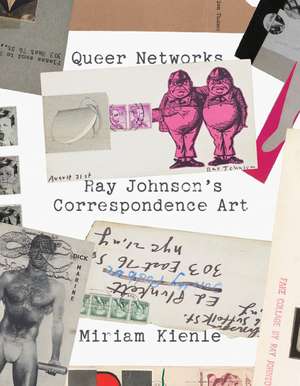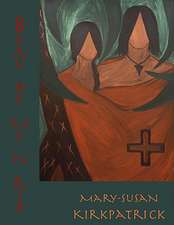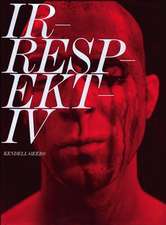Queer Networks: Ray Johnson's Correspondence Art
Autor Miriam Kienleen Limba Engleză Paperback – 28 noi 2023
How the queer correspondence art of Ray Johnson disrupted art world conventions and anticipated today’s highly networked culture
Once regarded as “New York’s most famous unknown artist,” Ray Johnson was a highly visible outlier in the art world, his mail art practice reflecting the changing social relations and politics of queer communities in the 1960s. A vital contribution to the growing scholarship on this enigmatic artist, Queer Networks analyzes how Johnson’s practice sought to undermine the dominant mechanisms of the art market and gallery system in favor of unconventional social connections.
Utilizing the postal service as his primary means of producing and circulating art, Johnson cultivated an international community of friends and collaborators through which he advanced his idiosyncratic body of work. Applying both queer theory and network studies, Miriam Kienle explores how Johnson’s radical correspondence art established new modes of connectivity that fostered queer sensibilities and ran counter to the conventional methods by which artists were expected to develop their reputation.
While Johnson was significantly involved with the Pop, conceptual, and neo-Dada art movements, Queer Networks crucially underscores his resistance to traditional art historical systems of categorization and their emphasis on individual mastery. Highlighting his alternative modes of community building and playful antagonism toward art world protocols, Kienle demonstrates how Ray Johnson’s correspondence art offers new ways of envisioning togetherness in today’s highly commodified and deeply networked world.
Once regarded as “New York’s most famous unknown artist,” Ray Johnson was a highly visible outlier in the art world, his mail art practice reflecting the changing social relations and politics of queer communities in the 1960s. A vital contribution to the growing scholarship on this enigmatic artist, Queer Networks analyzes how Johnson’s practice sought to undermine the dominant mechanisms of the art market and gallery system in favor of unconventional social connections.
Utilizing the postal service as his primary means of producing and circulating art, Johnson cultivated an international community of friends and collaborators through which he advanced his idiosyncratic body of work. Applying both queer theory and network studies, Miriam Kienle explores how Johnson’s radical correspondence art established new modes of connectivity that fostered queer sensibilities and ran counter to the conventional methods by which artists were expected to develop their reputation.
While Johnson was significantly involved with the Pop, conceptual, and neo-Dada art movements, Queer Networks crucially underscores his resistance to traditional art historical systems of categorization and their emphasis on individual mastery. Highlighting his alternative modes of community building and playful antagonism toward art world protocols, Kienle demonstrates how Ray Johnson’s correspondence art offers new ways of envisioning togetherness in today’s highly commodified and deeply networked world.
Preț: 204.34 lei
Nou
Puncte Express: 307
Preț estimativ în valută:
39.11€ • 40.40$ • 32.55£
39.11€ • 40.40$ • 32.55£
Carte disponibilă
Livrare economică 05-19 martie
Preluare comenzi: 021 569.72.76
Specificații
ISBN-13: 9781517911638
ISBN-10: 151791163X
Pagini: 296
Ilustrații: 108 black and white illustrations
Dimensiuni: 178 x 229 x 18 mm
Greutate: 0.57 kg
Editura: University of Minnesota Press
Colecția Univ Of Minnesota Press
ISBN-10: 151791163X
Pagini: 296
Ilustrații: 108 black and white illustrations
Dimensiuni: 178 x 229 x 18 mm
Greutate: 0.57 kg
Editura: University of Minnesota Press
Colecția Univ Of Minnesota Press
Notă biografică
Miriam Kienle is associate professor of art history in the School of Art and Visual Studies at the University of Kentucky.
Cuprins
Contents
Introduction: Please Send To
1. Singular and Plural: Postal Network as Heterotopia
2. Unsettling Networks: The Queer Connectivity of the New York Correspondence School
3. Counterpublicity: The “Exploits and Escapades” of the Robin Gallery
4. Facing Others: Portrait of a Curator as a Network
Conclusion: Ray Johnson’s Dead Letter
Acknowledgments
Notes
Index
Introduction: Please Send To
1. Singular and Plural: Postal Network as Heterotopia
2. Unsettling Networks: The Queer Connectivity of the New York Correspondence School
3. Counterpublicity: The “Exploits and Escapades” of the Robin Gallery
4. Facing Others: Portrait of a Curator as a Network
Conclusion: Ray Johnson’s Dead Letter
Acknowledgments
Notes
Index
Recenzii
"In this brilliant and revelatory book, Miriam Kienle provides a sophisticated reevaluation of one of the twentieth century’s most prescient artists, Ray Johnson. She conclusively demonstrates that Johnson’s work existed in, and interacted with, an intricate web of theoretical, sexual, political, and aesthetic concerns, most of which have never been broached in previous work on the artist. The result is a crucial contribution to thinking about Johnson, postwar culture, and queer politics and aesthetics."—Anthony Grudin, author of Warhol's Working Class: Pop Art and Egalitarianism and Like a Little Dog: Andy Warhol's Queer Ecologies
"Miriam Kienle’s detailed study of Ray Johnson’s correspondence art is intimate and focused yet expansive—much like Johnson’s work itself. Finally, we have a book-length, deeply researched account of Johnson’s queer ways of making and communicating. Queer Networks establishes Johnson as an inescapably centrifugal figure for the history of queer art in the 1960s and 1970s, and it argues for the wider potential of Johnson’s practice of rampant recontextualization as a cipher for the social and information networks at play in postwar American culture."—David J. Getsy, author of Queer Behavior: Scott Burton and Performance Art
"Kienle analyzes in diligent detail the intriguing and sometimes bizarre ways in which Johnson used his marginal status to ‘prank the art world from its periphery.’ This opens a revealing new lens on an enigmatic art world figure."—Publishers Weekly
"Kienle’s perceptive centering of queerness in Johnson’s artmaking would illuminate all this work as well.
"—Gay Lesbian Review
"Kienle examines the subversive subtext of Johnson’s methods as he forged connections and worked against the classification systems that dominate the art world. Ultimately, Johnson’s art proposes an alternative mode of making and being."—Hyperallergic
"Queer Networks makes clear that developments in queer theory and queer art history specifically in the past two decades mean the complexity of Johnson’s ephemeral correspondence practice can be understood more fully."—CAA Reviews
"Miriam Kienle’s detailed study of Ray Johnson’s correspondence art is intimate and focused yet expansive—much like Johnson’s work itself. Finally, we have a book-length, deeply researched account of Johnson’s queer ways of making and communicating. Queer Networks establishes Johnson as an inescapably centrifugal figure for the history of queer art in the 1960s and 1970s, and it argues for the wider potential of Johnson’s practice of rampant recontextualization as a cipher for the social and information networks at play in postwar American culture."—David J. Getsy, author of Queer Behavior: Scott Burton and Performance Art
"Kienle analyzes in diligent detail the intriguing and sometimes bizarre ways in which Johnson used his marginal status to ‘prank the art world from its periphery.’ This opens a revealing new lens on an enigmatic art world figure."—Publishers Weekly
"Kienle’s perceptive centering of queerness in Johnson’s artmaking would illuminate all this work as well.
"—Gay Lesbian Review
"Kienle examines the subversive subtext of Johnson’s methods as he forged connections and worked against the classification systems that dominate the art world. Ultimately, Johnson’s art proposes an alternative mode of making and being."—Hyperallergic
"Queer Networks makes clear that developments in queer theory and queer art history specifically in the past two decades mean the complexity of Johnson’s ephemeral correspondence practice can be understood more fully."—CAA Reviews












